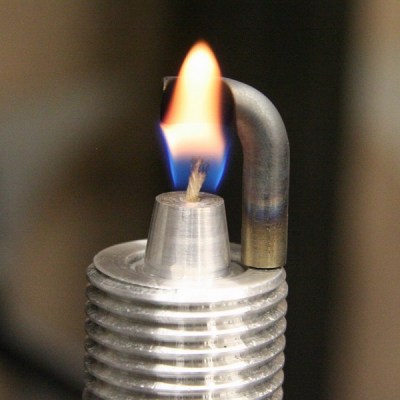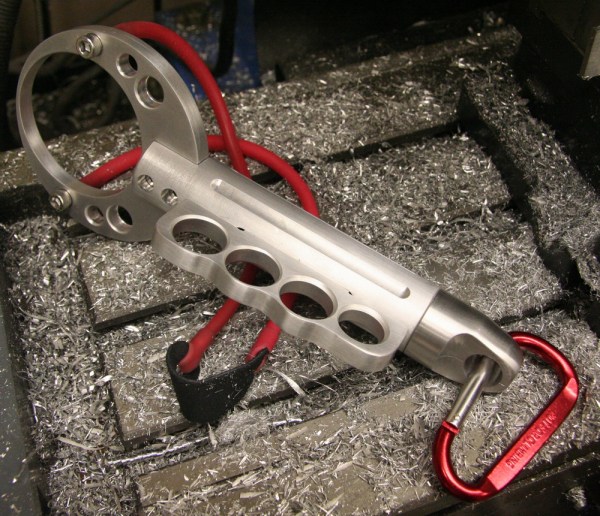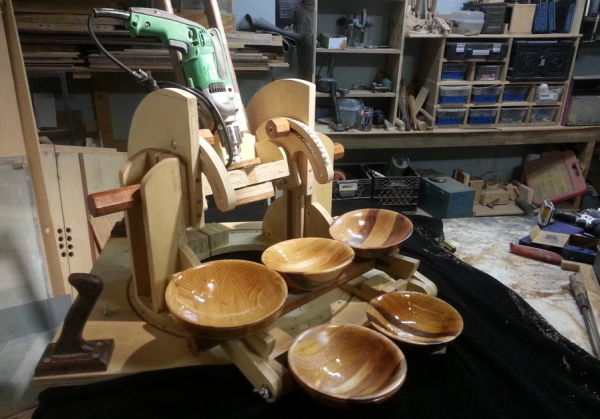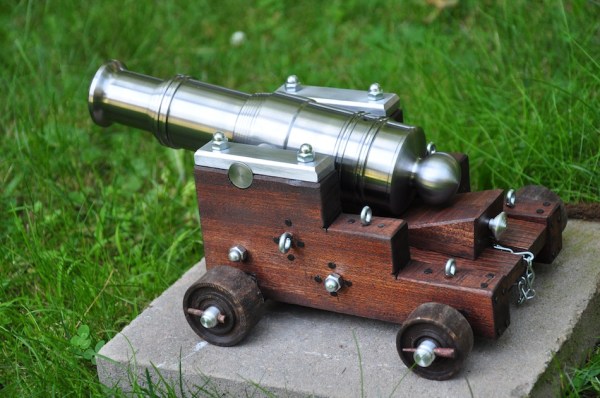Look up ‘concrete lathe’ and you’ll quickly find yourself reading the works of [David Gingery]. His series of books on building a machine shop from scrap begin with a charcoal foundry, and quickly move to creating a metal lathe out of concrete. Before [Gingery]’s lathe, around the time of World War I, many factories created gigantic machine tools out of concrete. It’s an old idea, but you’ll be hard pressed to find anyone with a shop featuring concrete machine tools. Cheap lathes are plentiful on Craigslist, after all.
Building a metal lathe from concrete is more of a challenge. This challenge was recently taken up by [Curt Filipowski] in a five part YouTube series that resulted in a real, working lathe made out of concrete, scrap, and a lot of bolts.
The concrete lathe begins with a form, and for this [Curt] cut out all the parts on a CNC router. Creating the form isn’t quite as simple as you would think – the concrete form included several bolts that would alow [Curt] to bolt bearings, ways made out of gas pipe, and angle iron. This form was filled with concrete in [Curt]’s kitchen, and after a nice long cure, the lathe was moved up to the upstairs shop. That’s a five hundred pound block moved up a flight of stairs by a single person.
The rest of the build deals with the cast concrete carriage which rides along the polished gas pipe ways, a tool post holder milled out of a block of aluminum, and finally making some chips. While it’s not the most practical lathe – the carriage moves along the ways by turning a wheel underneath the tailstock – it does demonstrate a concrete lathe is possible.








 The spark plug candle was fashioned out of a single piece of 6061 aluminum. To create the scale model, first the stock metal hit the lathe to create the “insulator” section of the plug. From there, he milled in the hex bolt section, then it hit the lathe again to create the threaded section. The inside was bored out to create space for the wick and oil, and then the electrode was installed just above the flame.
The spark plug candle was fashioned out of a single piece of 6061 aluminum. To create the scale model, first the stock metal hit the lathe to create the “insulator” section of the plug. From there, he milled in the hex bolt section, then it hit the lathe again to create the threaded section. The inside was bored out to create space for the wick and oil, and then the electrode was installed just above the flame.












